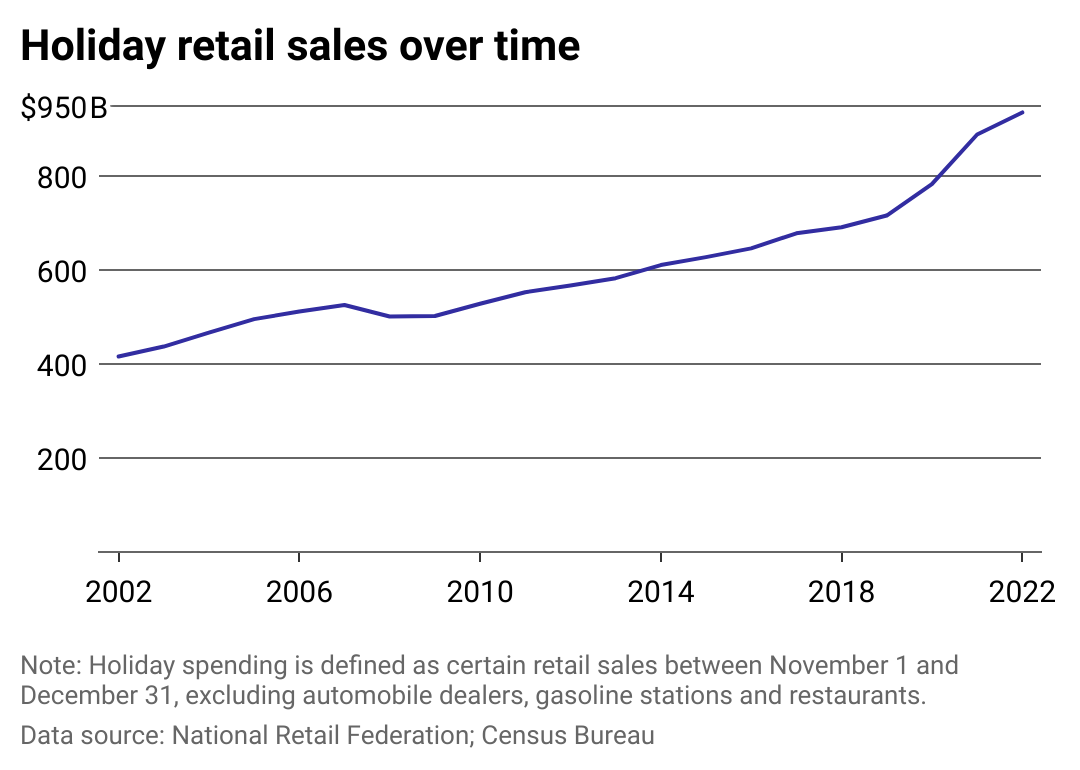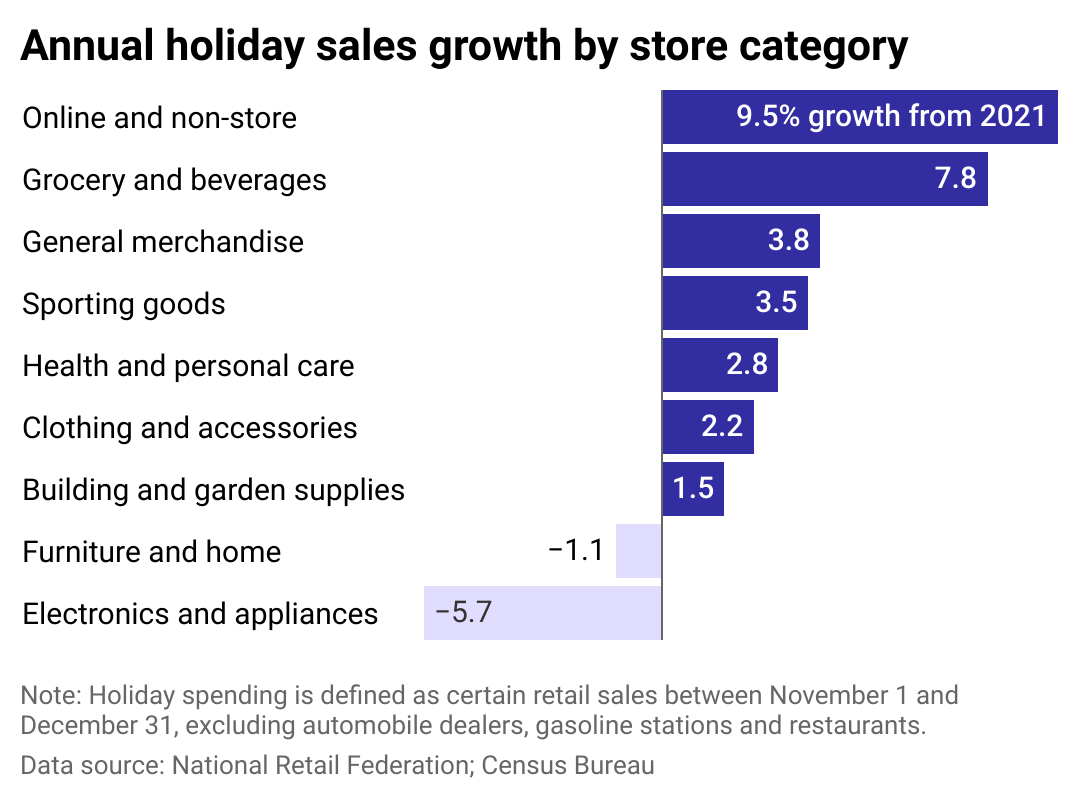How much Americans spent on holiday shopping in 2022
Published 6:30 pm Monday, March 6, 2023
Mario Tama // Getty Images
How much Americans spent on holiday shopping in 2022
The holiday season may be the most wonderful time of the year, but all the gifts, decorations, and travel can be rough on the wallet. In terms of consumer spending, only the back-to-school and back-to-college season outpaces winter holidays like Christmas and Hanukkah.
To get a sense of just how well retailers performed during the 2022 holiday shopping season, Experian used data from the National Retail Federation (NRF) to analyze holiday spending. The NRF calculates its estimates using the Census Bureau’s November and December retail spending data, excluding dollars spent at automobile dealers, gas stations and restaurants.
The 2022 holiday season was expected to be particularly strong for retailers, with most stores reopening in-store shopping at full capacity for the first time since early 2020. In-store sales were up 6.8%, according to Mastercard SpendingPulse, which tracked all types of consumer payments from November 2022 through December 2022. Online shopping remained popular, growing 9.5% since 2021—more than any other category.
The result? The NRF estimates that during the peak holiday spending season, sales reached $936.3 billion in 2022, 5.3% above 2021. That’s higher than the average holiday sales growth rate of 4.9% over the past decade.
Keep reading to dig deeper into those holiday shopping numbers, including what the growth rate means for the broader economic outlook.
![]()

Experian
After a big jump in 2021, holiday sales growth eased in 2022
From 2020 to 2021, holiday sales grew 13.5% to $889.3 billion, according to the National Retail Federation.
On average, holiday retail sales have increased 4.9% year-over-year in the past decade—a trend that led the NRF to predict an increase of 6% to 8% between 2021 and 2022. The past year’s holiday sales didn’t quite live up to that prediction, increasing only by 5.3%.
The lackluster sales could be because of the rising cost of goods due to inflation and consumer concerns about a future recession. A study conducted by CNBC in December 2022 found that 41% of Americans said they hoped to spend less on holiday gifts in 2022 than in 2021. Americans planned to spend an average of $907 in 2022, compared to $1,004 in 2021.

Experian
Online and nonstore sales saw biggest annual holiday sales increase
Despite the slower year-over-year growth in holiday spending overall, most categories still saw sales growth year over year.
With 87.2 million consumers shopping online on Black Friday and 77 million shopping online on Cyber Monday, it’s no wonder that online and nonstore sales—which include purchases made through catalogs, infomercials and temporary vendor stalls—saw the most significant increase from 2021. Spending on groceries and beverages posted the second-highest increase, partly because of the 11.8% increase in the consumer price index for food at home from December 2021 to December 2022.
Only two categories saw declining sales year-over-year: furniture and home goods, and electronics and appliances. The decrease could be partially due to continued supply chain bottlenecks pushing out the delivery dates for furniture or a sign that the trend of consumers pouring their disposable income into home upgrades that began during the pandemic is now subsiding.
This story originally appeared on Experian and was produced and
distributed in partnership with Stacker Studio.






